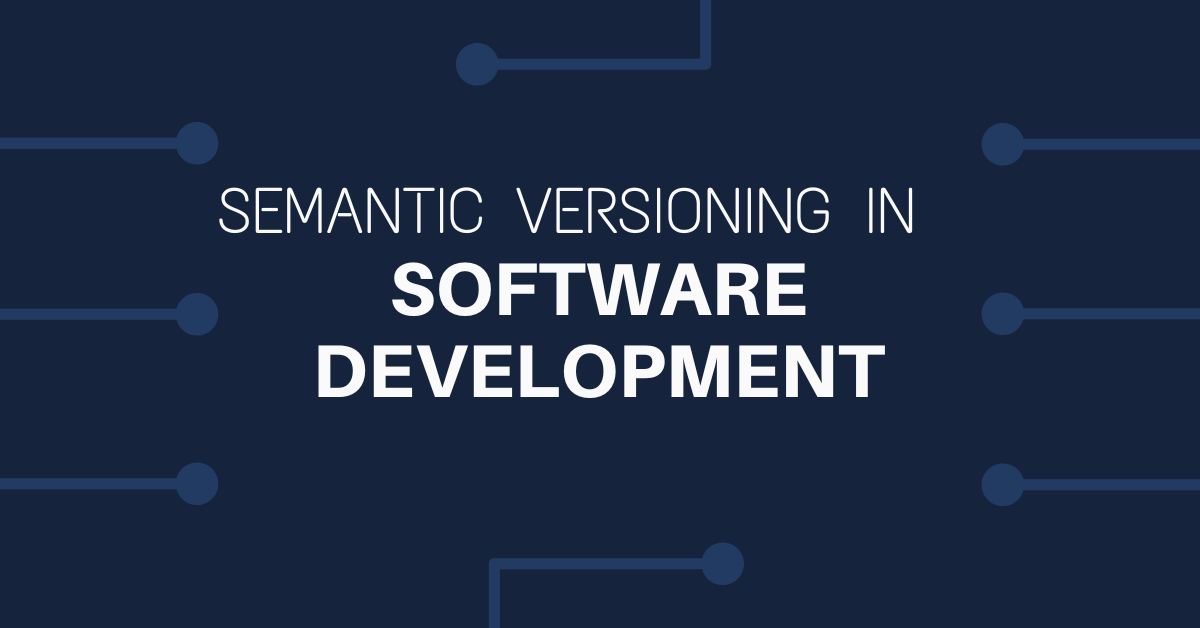Semantic Versioning in Programming Improvement
In the quick moving universe of programming improvement, overseeing adaptations and conditions is urgent for keeping up with soundness and similarity. Semantic Versioning (SemVer) is a normalized Versioning framework that assists engineers with imparting changes and updates in a reasonable and unsurprising way. This article investigates the standards, benefits, and viable utilizations of Semantic Versioning in programming improvement.
What is Semantic Versioning?
Semantic Versioning is a Versioning plan that utilizes a three-section number organization: 'MAJOR.MINOR.PATCH'. Each fragment passes explicit data about the progressions made on to the product:
- MAJOR: Additions when there are incongruent Programming interface changes.
- MINOR: Additions when usefulness is included a retrogressive viable way.
- PATCH: Additions when in reverse viable bug fixes are made.
For instance, in variant '2.1.3':
- '2' is the significant rendition,
- '1' is the minor form,
- '3' is the fix form.
Standards of Semantic Versioning
The center standards of Semantic Versioning are framed in the authority detail, which can be summed up as follows:
- Version Format: Renditions are meant in the arrangement 'MAJOR.MINOR.PATCH'.
- Compatibility:
- MAJOR variant zero ('0.y.z') is for beginning turn of events and may change out of the blue.
- Form '1.0.0' marks the primary stable delivery.
- Augmentations to the MAJOR variant sign incongruent Programming interface changes.
- Additions to the MINOR form signal added usefulness in a regressive viable way.
- Additions to the PATCH adaptation signal in reverse viable bug fixes.
- Pre-delivery and Construct Metadata:
- Pre-discharge renditions can be signified with a dash and extra identifiers (e.g., '1.0.0-alpha').
- Fabricate metadata can be added with an or more sign (e.g., '1.0.0+20130313144700').
Advantages of Semantic Versioning
Semantic Versioning offers a few advantages that assist with smoothing out programming improvement and upkeep:
- Clear Communication: Variants plainly demonstrate the nature and effect of changes, making it simpler for designers to comprehend the ramifications of updating.
- Dependency Management: Engineers can determine viable form ranges, guaranteeing that conditions are refreshed securely without presenting breaking changes.
- Predictability: With a normalized Versioning plan, designers can expect the kinds of changes that another variant could present.
- Collaboration: Semantic Versioning cultivates better coordinated effort among improvement groups, as the variant numbers give a typical language to examining changes and similarity.
Functional Utilizations of Semantic Versioning
Executing Semantic Versioning in a product project includes a few key practices:
Initial Release: Begin with variant '0.1.0' during introductory turn of events. At the point when the product is prepared for creation, discharge '1.0.0' to flag steadiness.
Updating Versions:
- Increase the MAJOR adaptation for inconsistent Programming interface changes.
- Increase the MINOR adaptation for new, in reverse viable usefulness.
- Increase the PATCH rendition for in reverse viable bug fixes.
Using Rendition Ranges:
- In reliance announcements, determine variant reaches to guarantee similarity. For instance, in a 'package.json' document for npm: '''json "conditions": { "some-library": "^1.2.0" } ''' The caret ('^') image demonstrates that any minor or fix refreshes are OK, however significant updates are not.
Pre-discharge Versions:
- Use pre-discharge renditions for testing and improvement stages. For instance: '''slam npm introduce some-library@1.3.0-beta.1 ''' This aides in recognizing issues before the steady delivery.
Automated Versioning:
- Use apparatuses like 'semantic-discharge' to mechanize Versioning and changelog age in light of commit messages, guaranteeing consistency and decreasing manual exertion.
Difficulties and Contemplations
While Semantic Versioning gives a reasonable system, there are moves and contemplations to remember:
- Discipline: Severe adherence to the Versioning rules is important to keep up with the advantages of Semantic Versioning.
- Compatibility: Surveying the effect of changes on existing clients and conditions requires careful testing and approval.
- Tooling: Coordinating Semantic Versioning into the advancement work process might require extra tooling and mechanization to oversee Versioning successfully.
End
Semantic Versioning is a useful asset for overseeing programming variants and conditions, giving clearness, consistency, and security. By sticking to its standards, engineers can guarantee that their product develops in a controlled and in reverse viable way, working with smoother updates and better coordinated effort. As programming projects fill in intricacy, Semantic Versioning turns into a fundamental practice for keeping a vigorous and dependable codebase.


